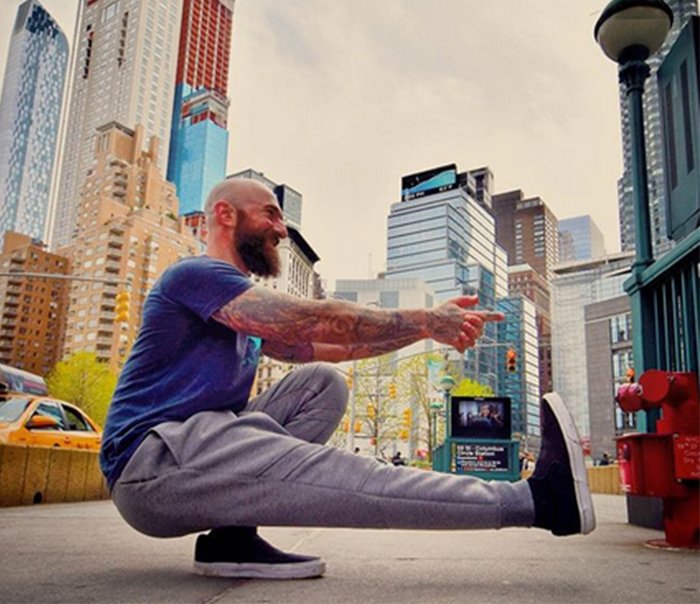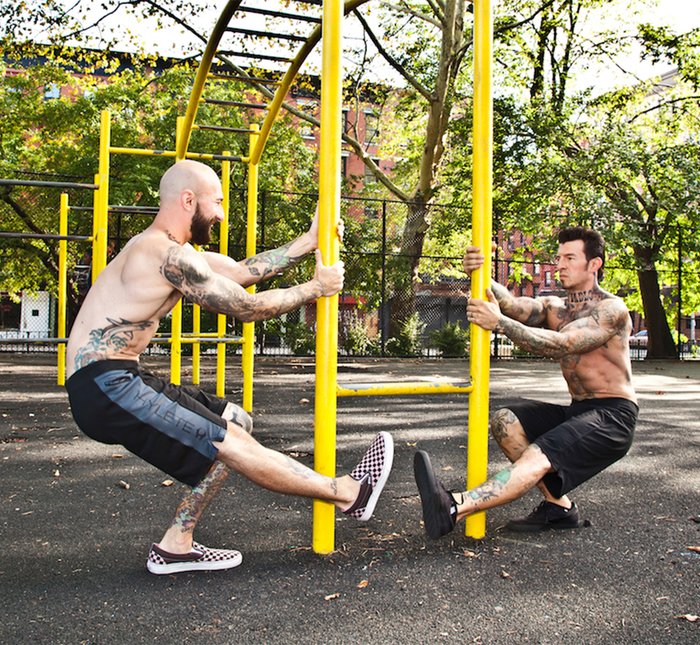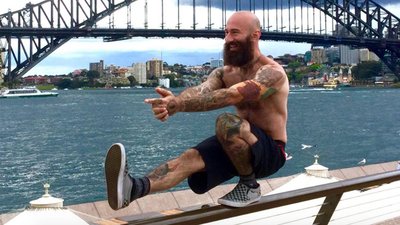I'll never forget the first time I saw a pistol squat. It looked so simple! But when I tried it for myself I was shocked by how much core strength, balance, and stability it took. And that's just to get down! Forget standing back up.
I was intrigued and inspired to master the exercise. Nearly two decades later, I'm much closer to that goal. I've done many thousands of reps on my own, and I've also coached a lot of other people to do their first rep, or improve their form if they could do a few already. Still, I find myself challenged and compelled to continue refining this move.
I truly think it is one of the all-time greatest exercises, but I know not everybody agrees with that. Despite my personal experiences, a lot of coaches have expressed concerns about the pistol squat, and if I'm being objective, those concerns aren't completely unfounded. So, let's look at why, and how to safely get the most out of this movement, if you find yourself under its spell.

Shots Fired
Any exercise can potentially be dangerous if it is performed with poor technique or by a practitioner who is not properly trained to attempt it. Sadly, that's been happening a lot with pistol squats. But that doesn't mean the exercise should be banned! It just means it should be taught progressively, to the right person, at the right time.

I'll be the first to say that it's ill-advised for a deconditioned person to attempt the full pistol right out of the gate. As a preliminary measure, you should be able to do lots of deep, controlled double-leg squats. At least 40 as far as I am concerned. Then, you can start working on some single-leg progressions. As such, it can take several months or longer before you'll safely build to anything close to a full pistol squat.
Even people with strong legs should approach the move in a progressive manner when they are new to it. When I first encountered the pistol, I was able to squat almost double my body weight with a barbell, yet the exercise was still beyond my reach.
Unfortunately, some people rush ahead before they're ready, and those people could wind up getting hurt.
Even if you are strong enough to do a pistol squat at first, the connective tissue in your knees can take time to adapt to the point where it can safely handle the exercise. If you experience any pain in your knee during this exercise, you would be best advised to switch to a less-difficult variation.
Pistol Progressions
Two of my favorite lead-up exercises to the pistol squat involve giving yourself an assist. The first of these methods, which you could call a "bench pistol," involves sitting back onto an object that provides stability in the bottom position, like a bench or step. The other method is what I like to call an "assist-ol" and it is performed by simply holding onto a pole, bar, suspension trainer, or other object for stability. The idea is that you can use your arm(s) to assist your leg by pulling against a fixed object.
The key to advancing with the pistol squat is to progress slowly, milking these earlier steps for all you can, while keeping your training volume relatively low. I find it helpful for beginners to practice just 2-3 times per week, with around 3-5 reps per set, and 5-6 sets per leg. This allows the practitioner to focus on doing each rep slowly and with as much attention to detail as possible.

You don't need to do more than 20-30 reps per leg to get the most out of any pistol squat variation, as long as you focus on strict form. This means:
- The foot of the squatting leg stays completely flat
- The ankle flexes on the way down
- The non-squatting leg stays locked
- The abs are engaged throughout the movement
- No bouncing in the bottom position
Give yourself as much assistance as you need in order to ensure that you are not sacrificing any of these elements. You can even combine the two methods I mentioned and squat onto a box while also holding onto something for support.
If you stick with those two progressions and prioritize form, you should be able to progress to pistols and practice them as a regular part of your training without any problems. In fact, your hips, knees, and ankles should get stronger from doing them.
Spinal Jeopardy?
Another common concern about the pistol squat relates to the spinal positioning. I'll admit it is impossible to perform a pistol squat without some degree of rounding in the lower back. But I'm not convinced that it's inherently dangerous to do so.

To be clear, anytime you're doing squats with weight on your back, it's probably best to maintain a neutral spine. However, since your spine isn't loaded during a bodyweight pistol, the lumbar curve in not an issue, though attempting to stay as upright as possible will make the exercise more challenging, which usually leads to increased strength. Also, if you focus on tightening your abs and creating abdominal pressure from the inside out, you'll further protect and stabilize your spine during the pistol squat.
No matter what type of training you choose, someone, somewhere would be happy to tell you it's dangerous. There is a lot of fearmongering in this world, but I want to empower you. In the end, it's up to each individual to make their own decisions. I'm going to keep doing my pistol squats—you decide what's best for you.

